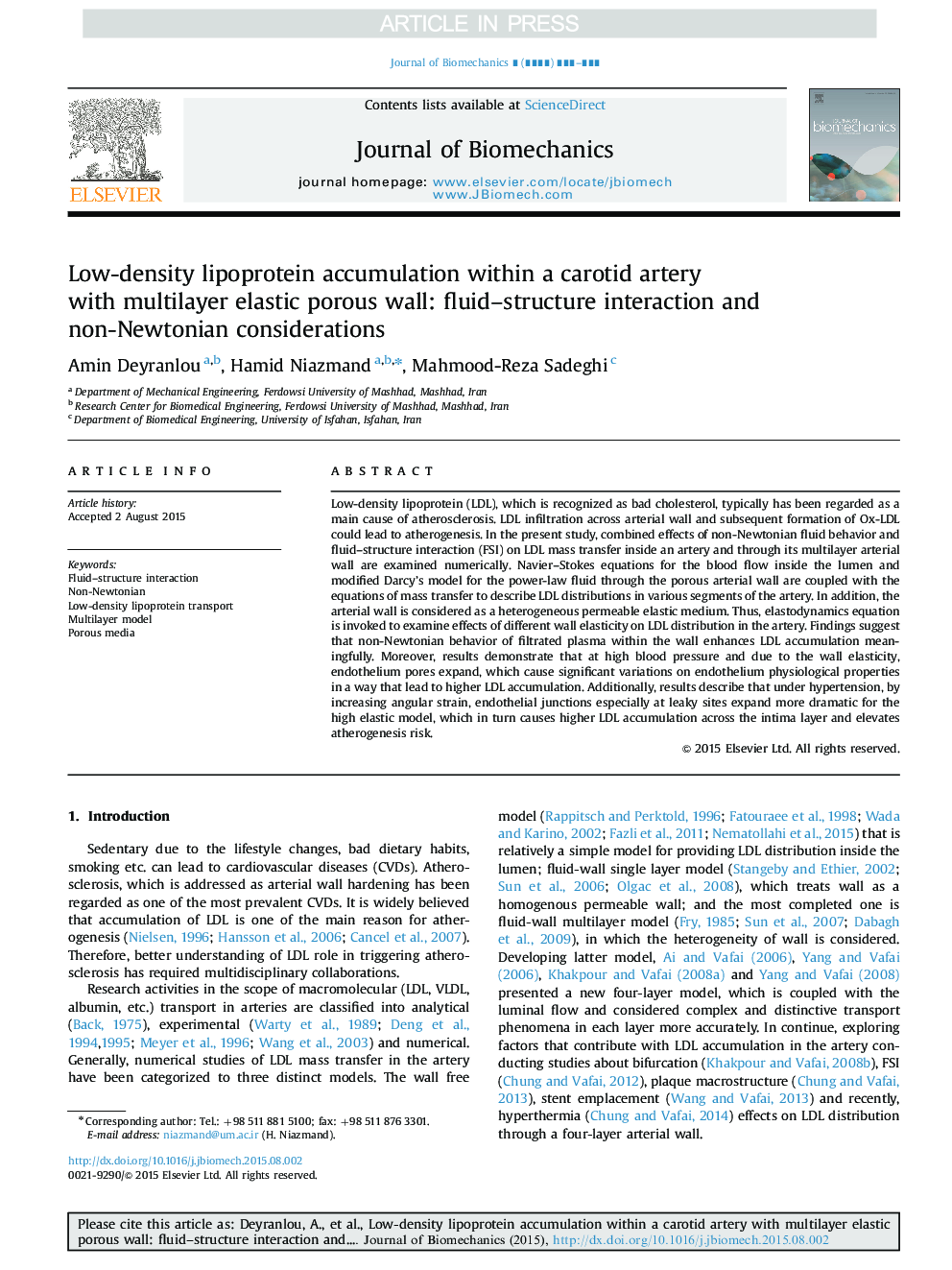| Article ID | Journal | Published Year | Pages | File Type |
|---|---|---|---|---|
| 10431263 | Journal of Biomechanics | 2015 | 12 Pages |
Abstract
Low-density lipoprotein (LDL), which is recognized as bad cholesterol, typically has been regarded as a main cause of atherosclerosis. LDL infiltration across arterial wall and subsequent formation of Ox-LDL could lead to atherogenesis. In the present study, combined effects of non-Newtonian fluid behavior and fluid-structure interaction (FSI) on LDL mass transfer inside an artery and through its multilayer arterial wall are examined numerically. Navier-Stokes equations for the blood flow inside the lumen and modified Darcy's model for the power-law fluid through the porous arterial wall are coupled with the equations of mass transfer to describe LDL distributions in various segments of the artery. In addition, the arterial wall is considered as a heterogeneous permeable elastic medium. Thus, elastodynamics equation is invoked to examine effects of different wall elasticity on LDL distribution in the artery. Findings suggest that non-Newtonian behavior of filtrated plasma within the wall enhances LDL accumulation meaningfully. Moreover, results demonstrate that at high blood pressure and due to the wall elasticity, endothelium pores expand, which cause significant variations on endothelium physiological properties in a way that lead to higher LDL accumulation. Additionally, results describe that under hypertension, by increasing angular strain, endothelial junctions especially at leaky sites expand more dramatic for the high elastic model, which in turn causes higher LDL accumulation across the intima layer and elevates atherogenesis risk.
Keywords
Related Topics
Physical Sciences and Engineering
Engineering
Biomedical Engineering
Authors
Amin Deyranlou, Hamid Niazmand, Mahmood-Reza Sadeghi,
